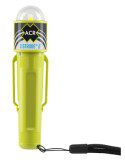 By Bob Currie, Recreational Boating Safety Specialist
By Bob Currie, Recreational Boating Safety Specialist
U. S. Coast Guard Auxiliary Station Galveston Flotilla
Recommended but Not Required
For years now I have urged boaters to add and use certain life-saving equipment on their boats. While the regulations require you to have a life jacket for each person aboard and require children under 13 to wear a life jacket while underway, I always urge boaters to wear their life jacket at all times when on a boat. You may remember that a local chief of police drowned when he fell overboard while anchored when a passing ship wave rocked his boat. A life jacket would have saved him. But we had a recent death when a fisherman’s boat capsized, and he was wearing a life jacket. We don’t know yet why he died, but exposure is at the top of the Possibilities list. Death from exposure can be quick when the water is cold but may take many hours if the water is merely below normal body temperature. It is generally accepted that a body core temperature of 77 degrees is fatal. While your body can compensate and even feel quite comfortable when the air temperature is 77 degrees, when you are submersed in 77-degree water, especially when the water is rough and depletes your energy, 77 degrees can, over time, decrease your core temperature such that you experience multiple organ failure. Other factors such as age and physical condition can accelerate the onset of hypothermia. The following tips may increase your survival time in water if you accidentally fall in:
- Wear a life jacket. If you plan to ride in a watercraft, wear a life jacket. A life jacket can help you stay alive longer in cold water by enabling you to float without using energy and by providing some insulation. Keep a whistle attached to your life jacket to signal for help.
- Get out of the water if possible. Get out of the water as much as possible, such as climbing onto a capsized boat or grabbing onto a floating object.
- Don’t attempt to swim unless you’re close to safety. Unless a boat, another person or a life jacket is close by, stay put. Swimming will use up energy and may shorten survival time.
- Position your body to minimize heat loss. Use a body position known as the heat escape lessening posture (HELP) to reduce heat loss while you wait for assistance. Hold your knees to your chest to protect the trunk of your body. If you’re wearing a life jacket that turns your face down in this position, bring your legs tightly together, your arms to your sides and your head back.
- Huddle with others. If you’ve fallen into cold water with other people, keep warm by facing each other in a tight circle.
- Don’t remove your clothing. While you’re in the water, don’t remove clothing because it helps to insulate you from the water. Buckle, button and zip up your clothes. Cover your head if possible. Remove clothing only after you’re safely out of the water and can take measures to get dry and warm.
My New Recommendation
Although we often search for missing mariners into the night, we just as often call off searches during the night. Of all the safety equipment I have recommended to recreational boaters, I have never before recommended that boaters wear an emergency strobe light before, but that is my new recommendation. A water-activated emergency strobe light can be purchased for about the same amount as a quart of live shrimp and will increase your chances of being found alive after dark exponentially. Most people don’t think of such an item because they have no plans to be out on the water at night. However, if you end up in the water during the day, there is a high risk of not being found before it gets dark.
 A water-activated strobe light such as this should be attached to your life jacket and tested before each trip. A personal strobe light doesn’t replace any required safety equipment; it just adds another element of safety by increasing your chances of being seen in the water. The strobe light even helps you be seen in the daylight hours. Many versions of emergency strobe lights use a Velcro attachment system so they can be removed and held high above your head.
A water-activated strobe light such as this should be attached to your life jacket and tested before each trip. A personal strobe light doesn’t replace any required safety equipment; it just adds another element of safety by increasing your chances of being seen in the water. The strobe light even helps you be seen in the daylight hours. Many versions of emergency strobe lights use a Velcro attachment system so they can be removed and held high above your head.
Summary
Although many regulatory agencies would just be happy if people followed the minimum requirements, recreational boating can be such a dangerous activity that the Coast Guard has made many recommendations that increase your chances of survival on the water. Why stop at the minimum requirements when by going just a little further you can greatly increase your safety on the water. Attach a water-activated strobe light to each life jacket. Additionally, indicate in your float plan that each life jacket is equipped with a strobe light.
[BC: Sep-26-2023]

 Posted in
Posted in 























